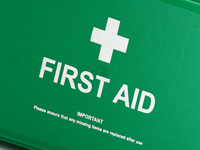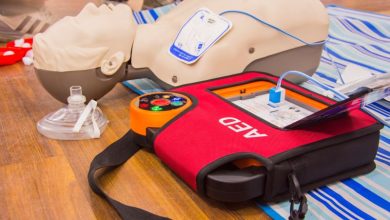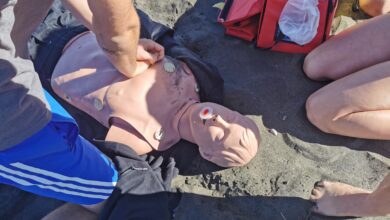First aid for workplaces

 In September 2009, the Department of Labour released ‘First Aid for Workplaces – a Good Practice Guide’
In September 2009, the Department of Labour released ‘First Aid for Workplaces – a Good Practice Guide’
to help manage first aid needs at the place of work. This also makes it clear that there is a legal requirement to take all practical steps to provide first aid facilities under the Health and Safety in Employment Regulations 1995 and to have procedures for dealing with emergencies under the Health and Safety in Employment Act 1992.
There are three important requirements when considering the first aid needs of your work place.
Suitably stocked first aid kits and facilities
A good-quality first aid kit is essential, and in large workplaces, more than one kit may be required. Not all first aid kits are created equal, and it is recommended that advice is sought from reputable suppliers rather than purchasing low-quality products. The Department of Labour suggest a minimum content for workplaces with no special risks, and this is clearly covered in the Good Practice Guide. Staff must be aware of the location of first aid kits, and they should be clearly identified with the recognised signage of a white cross on a green background.
With the first aid kit should be the contact details of your trained first aiders along with emergency contact numbers. Completing the Workplace First aid Assessment Checklist will help to identify what else should be in your first aid kit.
An appropriate number of trained first aiders
This will depend on the hazards in the workplace, how many employees, and how far away medical assistance is likely to be. Consideration also needs to be given to adequate cover for unplanned absences. This is particularly important when shift work is a part of normal operations. It is recommended that training of workplace first aiders is carried out by a provider who is accredited by the New Zealand Qualifications Authority. First aid certificates need to be revalidated every two years.
Selecting the right course is also very important. The knowledge needs are quite different for low-risk workplaces compared to high-risk workplaces where more advanced training may be appropriate. Quality training providers can advise which courses are best suited, but the responsibility lies with the employer to ensure that adequate first aid training is provided for the hazards identified in the place of employment.
Information for employees about first aid arrangements
Everyone must be given clear information about first aid that is available in their workplace. This includes the location of first aid kits, the names and locations of the trained first aiders and the procedures to follow when emergencies occur or first aid assistance is required. This should be a part of the induction process for all new employees, when there is a change in the nature or location of their duties, when changes occur to staff or first aiders, and at regular staff training days as a way of refreshing and reminding them.
First aid rooms are not always needed, but in workplaces with more than 100 employees consideration should be given to providing a good first aid room. If the risk assessment indicates that the risk of accident or injury is high, then a designated room should be provided regardless of the number of employees.
Conducting a risk assessment
The Department of Labour provide a comprehensive ‘Workplace first aid needs assessment checklist. This is available of their website at http://osh.govt.nz. The check list takes the employer through a series of issues for consideration and then suggests the impact on the provisions of first aid. From this the employer can make an informed decision on the appropriate number of first aid kits required and where they should be located, how many first aiders should be available and to what level they should be trained, and the information that must be passed on to employees.
Accidents and emergencies can occur at any time and a quick response may mean the difference between life and death. Equally serious harm injuries can occur in the home, school, industry and in the street. Be sure that you have adequate protection for your people.









